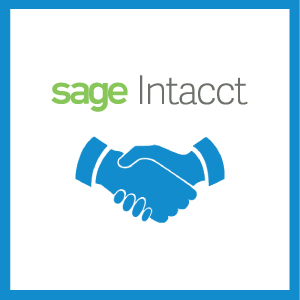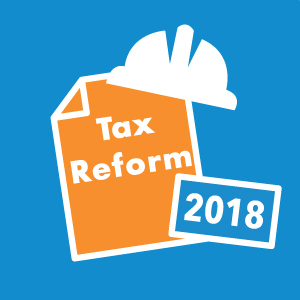“Half a league, half a league, Half a league onward, All in the valley of Death Rode the six hundred.” These words open one of the most famous poems in British History, written by Alfred Tennyson, which commemorated the loyalty, valor, and fortitude of the Light Brigade as they fought Russian forces in the Battle of Balaclava on 25 October 1854.
What the Charge of the Light Brigade Has in Common with Your Excel Loyalists
Greatly outgunned, the men of the Light Brigade valiantly charged against Russian Artillery Forces, charging with as many as 600 men as they approached a well-fortified artillery unit.
Knowing this, the Charge of the Light Brigade is less a story of heroism, and more a story of incompetence. Poor communication resulted in losses of nearly 20% of the brigade, and war reporter William Russell documented the destruction, quoted, “our Light Brigade was annihilated by their own rashness, and by the brutality of a ferocious enemy.”
Now that you’ve gotten your history lesson for the day, you may be wondering what this has to do with finance, accounting, or a personal spreadsheet software invented some 131 years after the battle. The answer? These two things have more in common than you’d think.
Three Parallels between the Failed Charge and Your Company’s Spreadsheet Jockeys
There are many parallels between your Excel loyalists in the finance and accounting departments and the destined-to-fail charge that occurred on 25 October 1854. We’d like to explore a few of them below.
The Wrong Tools for the Job
The Light Brigade was a fast-moving reconnaissance and flanking unit, poorly suited for a frontal assault. While they were perfect for capturing Russian units attempting to carry away guns, the heavy brigade was better for attacking the fortifications (redoubts) held by the Russians.
Just as the light brigade was sent to do the heavy brigade’s job, many organizations are using Excel to accomplish tasks that Excel is not designed to handle—planning, analysis, closing the books, and more; where there’s a will, there’s a formula. This is a dangerous way of thinking akin to thinking that the light brigade would have been fine if it just had armor.
We’ve gone on the record saying that Excel has value for some purposes—like a personal budget or other simple tasks. However, there are many medium and large companies that attempt to stretch the software beyond its usefulness—often with dire results.
Blind Loyalty
Of course, The Charge of the Light Brigade documents another thing—loyalty. Valiantly, they rode “into the jaws of death, the mouth of hell,” facing surefire death.
If we could use one word to describe Excel loyalists, it would be loyal. As we discussed in our last blog on the software, “There’s a Red Badge of Courage that people wear when they stay up all night and work a spreadsheet to get something that they think is unique and artisanal.”
However, Loyalty as it pertains to Excel is by choice, while the Light Brigade was loyally following orders as they fought for the crown. There are many other, much more capable, less risky tools available to company. In fact, some Excel Loyalists are so stubborn that they will eschew a multi-million dollar implementation to use their software of choice.
A Huge, Costly Mistake
The Charge of the Light Brigade likely was the result of a misinterpreted order by one of the officers. People make mistakes. Some are costlier than others. The Charge of the Light Brigade stemmed from an unclear order and a sweeping motion of the arm, when Lord Raglan sent the following message:
“10:45. Lord Raglan wishes the cavalry to advance rapidly to the front — follow the enemy and try to prevent the enemy carrying away the guns — Troop Horse Artillery may accompany – French cavalry is on your left. R Airey. Immediate”
Unfortunately, it was delivered as “Tell Lord Lucan the cavalry is to attack immediately.”
Excel users make mistakes. Writers make mistakes, financial professionals make mistakes, and commanders make mistakes. We all make mistakes.
The difference of course, is this: If we write a typo on a blog, it doesn’t affect the other blogs, it won’t crash our website, and it will do little more than annoy a few of the sticklers among us.
In Excel, a misplaced decimal, an extra zero, or an improperly selected cell in a formula may not be caught for months, quarters, or years. As time passes, this one missed number creates a chain reaction, as concurrent spreadsheets are built upon this mistake, and the mistake becomes your truth.
With at least one error on nearly 90 percent of spreadsheets, the only time this might work is the rare possibility that two errors counteract each other.
Winning the Great War against Spreadsheets
There are many risks in pushing Excel beyond its limitations, and it appears that the business community is starting to realize this. With scathing articles on the failures of Excel being featured in Forbes and the Wall Street Journal in recent months, the future of the spreadsheet cavalry is in doubt.
Knowing this, as you push to shun spreadsheets from your financial processes and fight to increase accuracy and security by eradicating Excel, it’s vital to look at opportunities to sway Excel loyalists from the software—which is easier said than done.
As you push through 2018, you need to slowly convince the spreadsheet jockeys that Excel is not the right tool for the job by demonstrating to them just how user-friendly and intuitive an alternative can be (which seems less heartless than the alternative pitched by Forbes contributor Meta S. Brown).
The great war against spreadsheets will be long and arduous, and needs to be done subtly—because no one likes having a decision forced upon them. One of the best ways to convince the loyalists is to demonstrate how much time and effort they can save by giving them a chance to test drive a platform like Sage Intacct that can show them how much easier life could be.
Looking at the rest of 2018, we will be writing many more blogs on the pitfalls of using Excel for finance—as well as its partner in crime QuickBooks—so be sure to subscribe to our email list for all the latest.











